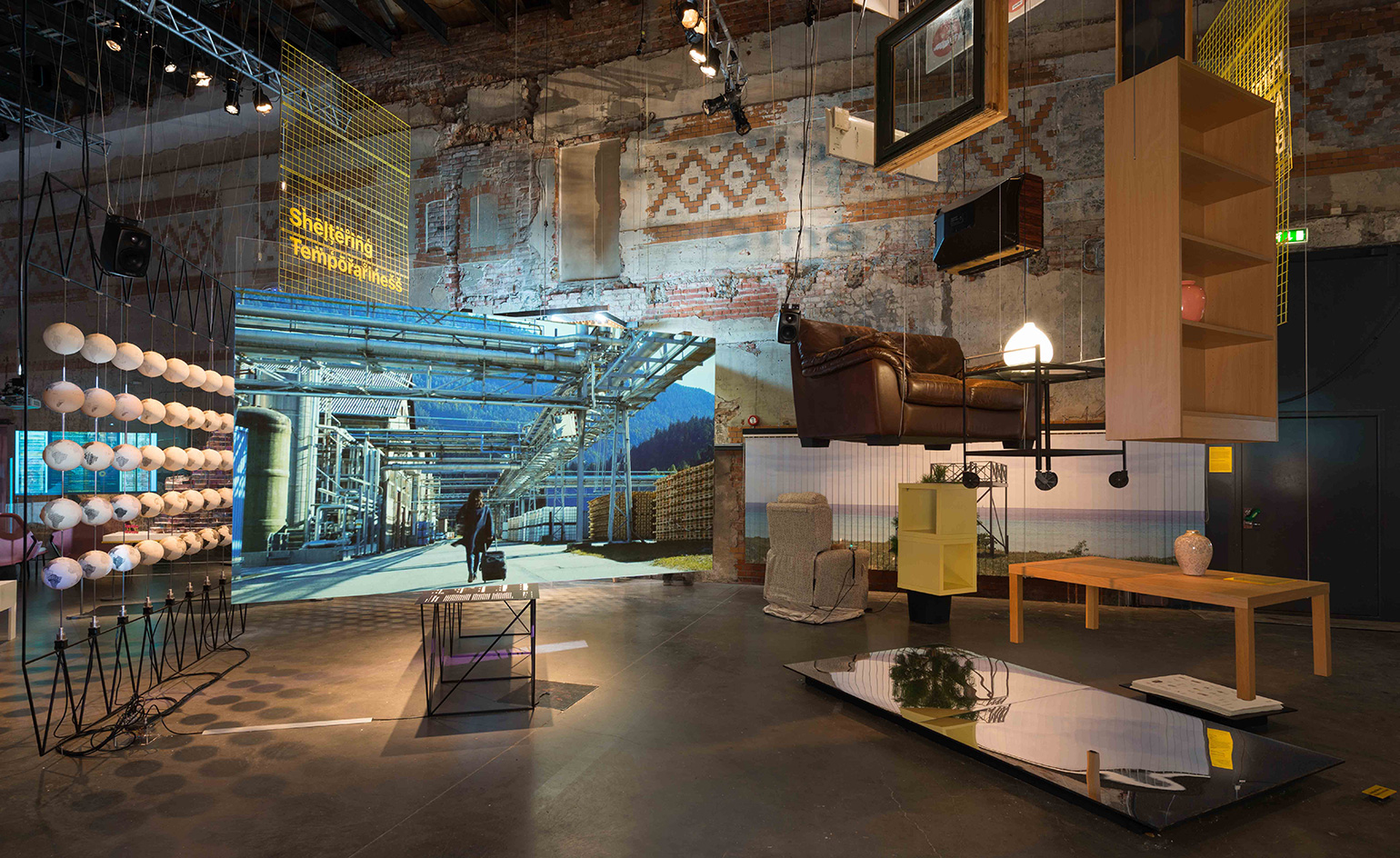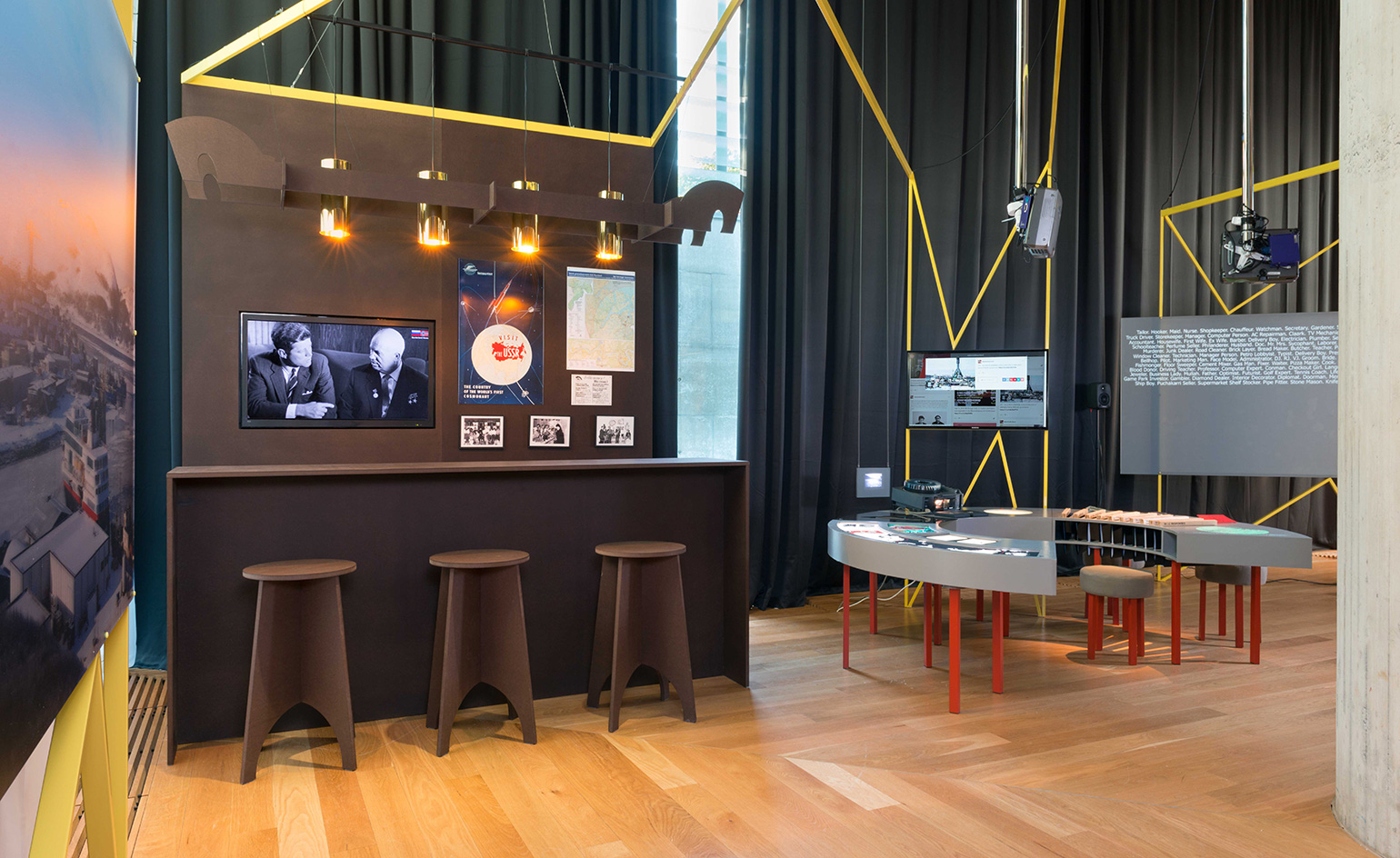Urban conditions: Oslo Architecture Triennale explores the architectures of ‘belonging’

It was inevitable and necessary that an architecture Triennale in 2016, especially one located in a city – Oslo – currently being transformed by an unprecedented growth in population, tourism and immigration, would seek to address the urban conditions and architectural manifestations provoked by the refugee crisis, mass migration and the more transient way people live now. As Carlos Minguez Carrasco, one of the Triennale’s five curators, says, 'we didn’t want to ask what the most important topics in the schools of architecture are today or try to present the best practices of the past two years, we wanted to look at the most important things happening in the news and in our daily lives right now. We wanted to look at what happens to us when we travel, live, move?'
'After Belonging', as this year’s edition is titled, seeks to investigate what it means to belong and the different ‘ways we stay in transit’, the after referring not to a ‘condition of post-belonging or nostalgia’ but rather to the quest or pursuit by all humans to belong somewhere, or somehow. 'Circulation allows greater access to territories and commerce but not everyone circulates in the same way or out of choice,' said Marina Otero Verzier, another of the curators, at the launch. 'Circulation also promotes growing inequalities for groups engaged in precarious transit.'
These inequalities and this precariousness are exemplified in two dense exhibitions that require a great deal of reading and a few visits for maximum impact. One at the DOGA (Norwegian Center for Design and Architecture) called 'On Residence' looks at architecture across different scales, from real estate markets to large processes of urbanisation. Pieces, or what the curators call ‘evidence’ or ‘speculations’, include a map that shows internal migrations within Colombia from rural areas to cities, a colourful digital visualisation of the globe that highlights the direct relationship between human migration and air pollution (toxic aerosol emissions created in the north provoke migration from the south to the north) and research on Luanda’s Isle of Pleasures, a resort where locals go to unwind that is becoming increasingly exclusive as it fills up with gated housing communities.
The second exhibition – 'In Residence' – is divided into ten case studies and five so-called ‘intervention strategies’ by architect teams around the world on which work began one year ago and that are set to outlive the Triennale. They include practical projects such as a guide for recently arrived immigrants (made by immigrants) and an apple press made with and for the refugees living in the Torshov reception centre in Oslo for use in an orchard nearby; there’s even an app called bnbOPEN that seeks to match refugees with Oslo hosts.
The most engaging piece is a 15-minute film with an Airbnb host called Mark who has shed all belongings and finds it cheaper to sleep in a different hotel every night than stay in one of his own homes. His fictional back stories (with accompanying photos) for the owners of each home are imaginative and surreal. 'All these stagings are a good definition of our media- and fiction-based reality, and how our lives are today,' says Minguez Carrasco. 'The idea of home is destabilised, that for us is the connection to architecture.'

In the foreground a piece by Beirut practice L.E.FT and artist Lawrence Abu Hamdan called The City of Islams examines 1,400 years of the architectural typology of the mosque

An installation entitled 'Movement as Civil Disobedience' maps migration and the networks of informal solidarity workers on the Greek island of Lesbos. Because they work outside governmental regulations they can respond much faster to the ever-changing situation

The second exhibition – 'In Residence' – is divided into 10 case studies and ‘intervention strategies’ by architect teams that are designed to outlive the Triennale

Managing Dissidence is an installation of pieces that attempt to subvert the oppressive architecture, systems and technologies controlling behaviour in airports. The most appealing is a drinks dispensing machine that allows you to drink the spirits left behind by passengers who have had their bottles confiscated (there is a real duplicate at Oslo airport)

In the video installation Selling Dreams by Ila Bêka and Louise Lemoine. Airbnb host Mark recounts how a bizarre experience with his first guests turned him into a voyeur and professional nomad. Now he rents out several homes in Copenhagen and gives each home a fictional and somewhat surreal back story

A recreated bar recalls the 59 days during the Cold War when Norwegians travelled visa-free into the Russian town of Boris Gleb to enjoy its bar, cinema and liquor shop

This installation explored the rise in so-called techno-religious communities in Lagos, Nigeria. Pictured is a replica of an informal church
INFORMATION
The Oslo Architecture Triennale runs until 27 November. For more information, visit the Oslo Architecture Triennale website
Wallpaper* Newsletter
Receive our daily digest of inspiration, escapism and design stories from around the world direct to your inbox.
Giovanna Dunmall is a freelance journalist based in London and West Wales who writes about architecture, culture, travel and design for international publications including The National, Wallpaper*, Azure, Detail, Damn, Conde Nast Traveller, AD India, Interior Design, Design Anthology and others. She also does editing, translation and copy writing work for architecture practices, design brands and cultural organisations.
-
 Warp Records announces its first event in over a decade at the Barbican
Warp Records announces its first event in over a decade at the Barbican‘A Warp Happening,' landing 14 June, is guaranteed to be an epic day out
By Tianna Williams
-
 Cure your ‘beauty burnout’ with Kindred Black’s artisanal glassware
Cure your ‘beauty burnout’ with Kindred Black’s artisanal glasswareDoes a cure for ‘beauty burnout’ lie in bespoke design? The founders of Kindred Black think so. Here, they talk Wallpaper* through the brand’s latest made-to-order venture
By India Birgitta Jarvis
-
 The UK AIDS Memorial Quilt will be shown at Tate Modern
The UK AIDS Memorial Quilt will be shown at Tate ModernThe 42-panel quilt, which commemorates those affected by HIV and AIDS, will be displayed in Tate Modern’s Turbine Hall in June 2025
By Anna Solomon